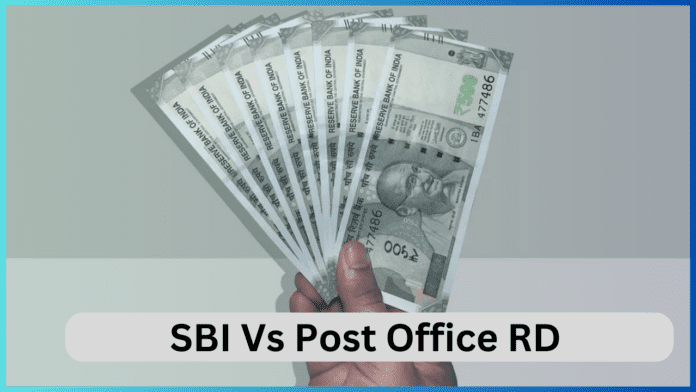SBI Vs Post Office RD: It is a bit difficult for salaried class people to withdraw a large amount at once for investment. He likes to save some money every month from his salary and invest it in a savings scheme.
SBI Vs Post Office RD : It is a bit difficult for people in salary class to withdraw a large amount at once for investment. He likes to save some money every month from his salary and invest it in a savings scheme.
Keeping such people in mind, Recurring Deposit i.e. RD has been created. You invest money in this every month and then you get a fixed interest. RD is for one year to 10 years. Apart from many banks including State Bank of India (SBI), ICICI Bank, HDFC Bank, post offices are also offering RD. Here we are telling you about RD of Post Office and SBI Bank.
SBI Recurring deposits
SBI is offering RD for a period of one year to ten years. SBI is offering 6.5% to 7% interest on recurring deposits to the general public and 7% to 7.5% to senior citizens. These rates are applicable from 15 February 2023.
SBI RD Rates
1 year to less than 2 years 6.80% (General) 7.30% (Senior Citizen)
2 years to less than 3 years 7% (General) 7.50% (Senior Citizen)
3 years to less than 5 years 6.50 (General) 7.00 (Senior Citizen)
Upto 5 years and 10 years 6.50 (General) 7.50 (Senior Citizen)
Post Office RD
Post Office RD comes with a maturity period of 5 years. Post Office RD Scheme does not offer the benefit of additional interest for senior citizens. These rates are applicable from July 1, 2023.
Post Office RD
5 year RD – 6.5%
Tax is levied on RD interest
TDS is deducted on the interest received on RD. TDS of 10% is applicable on the interest rates received on RD. If the one month interest on RD is more than Rs 10,000 then TDS will be deducted.
Where are you getting more benefits?
SBI Bank is offering higher interest on RD to senior citizens. Investing here will be a profitable deal. Same, if the general public is investing in RD for one or 2 years then SBI is giving more interest.


